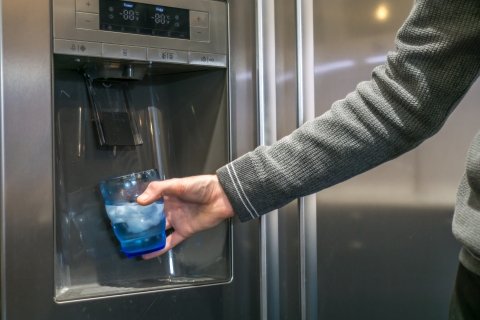Helpful Tips When Buying a New Fridge
Replacing old appliances can be one of the easiest and and most effective ways to update a home for energy efficiency, One of the largest energy users on which to focus is the refrigerator and freezer, or quite simply, fridge. If you are not certain whether replacing your current refrigerator is necessary go the the Energy Star Flip Your Fridge Calculator to find out how much that old refrigerator or freezer costs to operate and how much you can save by flipping it to a new ENERGY STAR-certified refrigerator.
When purchasing an ENERGY STAR refrigerator, here are some helpful buying guidance to optimize performance and savings:
- Be sure to select the right size for the household’s needs. A refrigerator that is too large wastes energy. The most energy-efficient models are typically 16-20 cubic feet. Generally, the larger the refrigerator, the greater the energy consumption.
- Models with the freezer on top tend to use less energy than those with freezers on the bottom or side-by-sides.
- Refrigerators with fewer doors reduce the air leakage. To maximize your savings, minimize the number of doors and pay attention to cool air you can feel when you shut the doors. Make sure the seals around the doors are airtight. If they are not, replace them.
- Consider selecting an ENERGY STAR-certified refrigerator with a lower Global Warming Potential refrigerant (GWP). Refrigerants with lower global warming potential (GWP) for refrigerators, such as R600a and R-441A, means your product will have a much lower impact on the climate if the refrigerant is released into the environment.
- Don’t keep the old refrigerator as a second refrigerator. On average, an old refrigerator uses about 35% more energy than a model that has earned the ENERGY STAR label. If second refrigerator is truly needed, purchasing a larger refrigerator for the extra room will save money and energy over the long term..
- Be certain to properly recycle the old refrigerator. When delivering a new refrigerator many appliance retailers will pick up and recycle that old refrigerator.
In-the-door ice and water dispensers have become common on refrigerators. In fact, it can be hard to find a model that doesn’t offer this feature. A dispenser can be a nice convenience as it offers cleaner and better tasting water and ice due because of built-in filters and can save the on cost of bottled water and drastically reduce the amount of plastic garbage in the home. However, refrigerator freezers with in-the-door ice and water dispensers typically cost more than comparable models without the feature, and annual operating costs tend to be higher as well, due to the extra electricity needed to power the unit and the cost of replacement filters. Another major drawback to in-the-door ice and water dispensers is that the icemaker and water filter reduces the amount of usable storage space in many models.
Source: Purchasing and Maintaining Refrigerators and Freezers | Department of Energy




